PConline Culture According to the trends in CES2015 TV products, we conducted a color gamut measurement on the TVs in the stores last week. As a result, we found that the gamut value of traditional TVs is actually not low, and the lowest product exceeds 70% of the NTSC standard. During the testing process, we found that products with similar color gamut values ​​and even a certain color gamut value had very little or no difference in image quality, or varied in style, and they were very different. Therefore, it was difficult to say that the color gamut was high. The picture quality must be good.
Ever since, the problem has come. If the color gamut is high and it cannot directly explain the quality of the picture, then what kind of picture should be shown to be of good quality? This reminds me of Liu Hansheng, who is known as the godfather of the audio industry when he played audio in his early years. At that time, he summed up the criteria for assessing the sound quality as whether the sound was tolerable or not. Can we say that the picture is not resistant to the good picture quality?
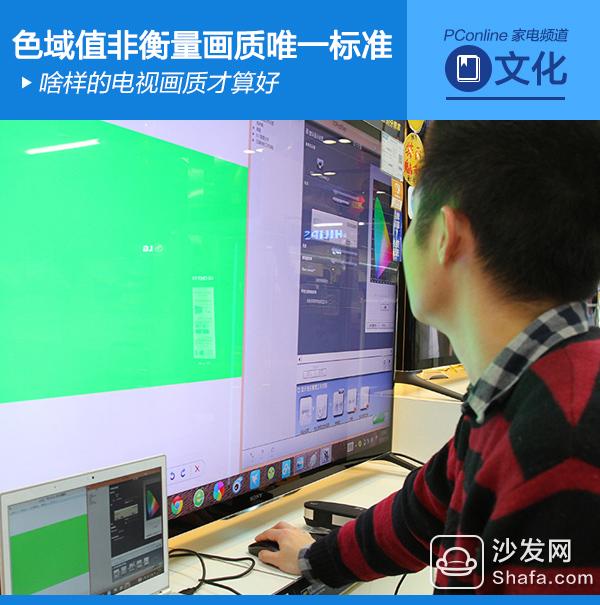
In terms of the author alone, it is said that the sound quality is good enough to listen to and that the sound of something that is resistant to the sound is good. This is not inappropriate, but there is still a limit to this; according to Master Liu’s argument, measuring the quality of a cloth depends on its resistance Durable, but the canvas is naturally durable, silk is much more expensive, is it necessary to say that silk is inferior to canvas? It does not seem to be complete. Therefore, Master Liu later used a lot of details to evaluate the sound quality, such as "expensive", "spatial sense", "texture", etc., to perfect his theory. There is still much commonality between vision and hearing. Fortunately, vision is much more intuitive and can be illustrated with pictures. Therefore, there is more “evidence†when discussing the quality of images.
Having said so much, it is estimated that you see it is enough tired, it is estimated that someone will ask, Xiao Bian, what do you really want to express? Actually, Xiao Bian just wanted to say that simply using a standard for a good picture quality is not reliable, we have more ways to measure the quality of the picture, and we also come from bragging about what we have done for a long time. .
About the color space store evaluation article please click on the image below

Measuring the color of television
One concept that is easily confused with the color gamut is the color depth of the TV panel. The mainstream LCD panel adopts a color depth of 8 bits for each primary color, and a Japanese manufacturer has also introduced a 10 bit LCD panel driving technology. Therefore, some people think that high color depth brings a wider color gamut, and this is exactly A misunderstanding. The advantage of using high bits is that the accuracy of the color will be greatly increased, and will not increase the color gamut of the display device.
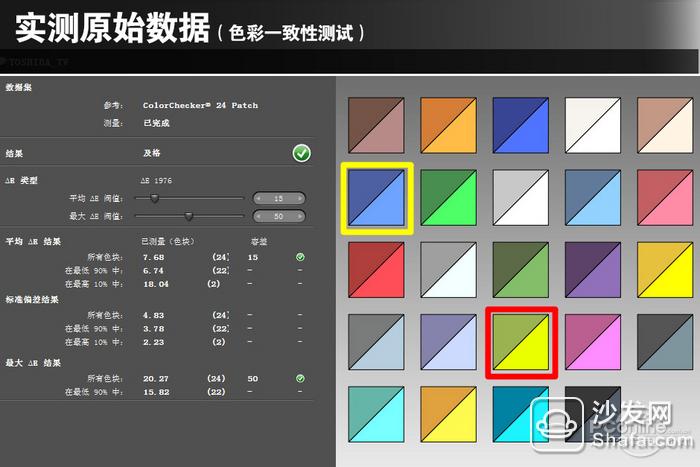
Color accuracy is also a benchmark test to measure image quality.
Since flat panel TVs are internally digital processing circuits, each color is represented by various binary values. Taking 8bit as an example, an 8-bit binary number can represent a total of 256 values ​​from 0-255, that is, a certain color has only 256-level differences, and using 10-bit, the value range represented will extend from 0-1023. , can describe 1024 color levels. So for the same original signal, using a high color depth is equivalent to describing the original signal with a more precise order of magnitude without changing the original signal itself. Therefore, the high color depth can only make the display device display more accurate colors, and the transition between colors is smoother, and there is no improvement in the color gamut.
Through the color test, we can get accurate data on the product's color accuracy and help us determine the color processing accuracy of the product and the color orientation of the picture.
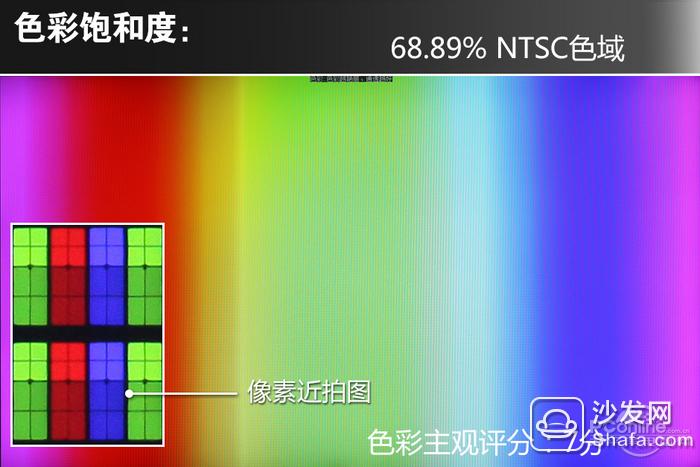
Our previous test chart will give a color transition screen shot, if you see a clear line, this shows that the TV's color in the vicinity of the actual line, the lack of color accuracy, that is, the lack of color. And if you see unusual patches on other screens, this is similar to this problem. In other words, the television can theoretically be displayed within the color gamut, but since the liquid crystal is a digital image processing, it can actually display a limited number of points in the color gamut range instead of a dense one. So the advantage of a high-bit panel driver is that it allows the TV to display more points than a low-bit driver. This is the principle.

Screen shot A
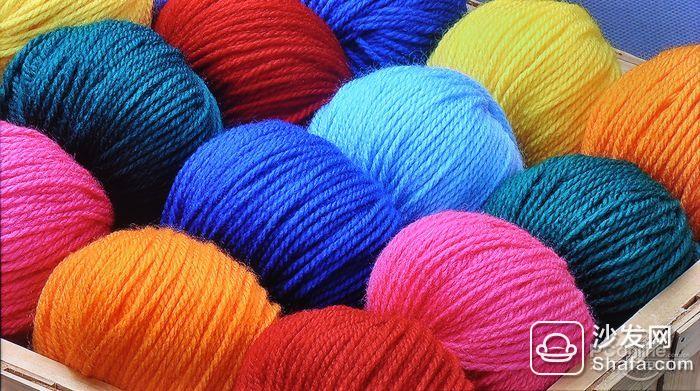
Screen shot B
The above two images are the screen shots of two televisions with the same color gamut. The color shift of the camera color is removed (the evaluation room always uses the same camera and lens). From the screen shot, you can see which TV is The color transition is good, and the reference point is the dark part of the pompom. With the change of the color depth, the situation of adhesion gradually appears. Through this comparison, the effect of screen shot B should be slightly better than A.

Screen shot C

Screen shot D
Character skin color is also a good reference point for color accuracy. East Asians belong to the yellow race. This kind of skin color is not accurate for all TV sets. If the color adjustment is not ideal, it will easily make people feel unreal. Comparing the two figures, although the saturation in the figure below is higher, the skin tone appears dull and the details of the makeup have been lost.
Of course, similar quality and sound quality are very subjective conscious evaluation. If you like high saturation, screen shot D may be more suitable for you, which requires you to weigh in the store.
Optical control performance is really important
The structure of LCD TVs is a bit like a film movie. All of them are images illuminated by a backlight source. Therefore, besides looking at the panel, it is also very important whether the backlight is controlled accurately enough.
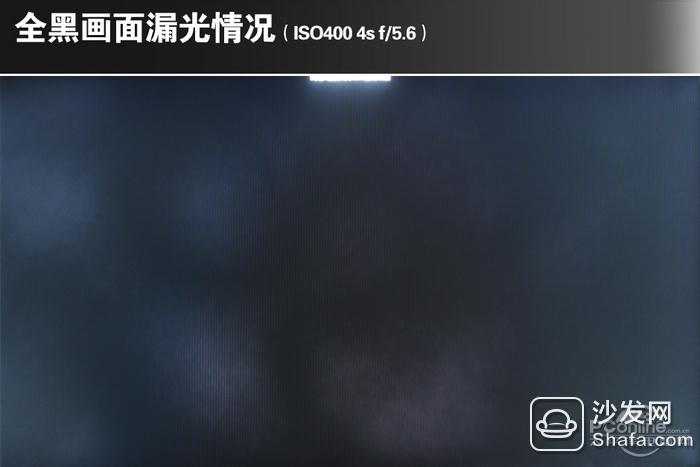
Friends who buy LCD TVs may be quite interested in the above picture. If you use an entry-level LCD TV to play a dark picture at night, it is easy to see the above situation. We call it a leak. It should be pointed out that unless some brands find the backlight in the all-black environment, some light leakage will occur. Turn off the backlight and there is no way to guarantee the dark details. Therefore, TVs with good light control performance are rare in the market!
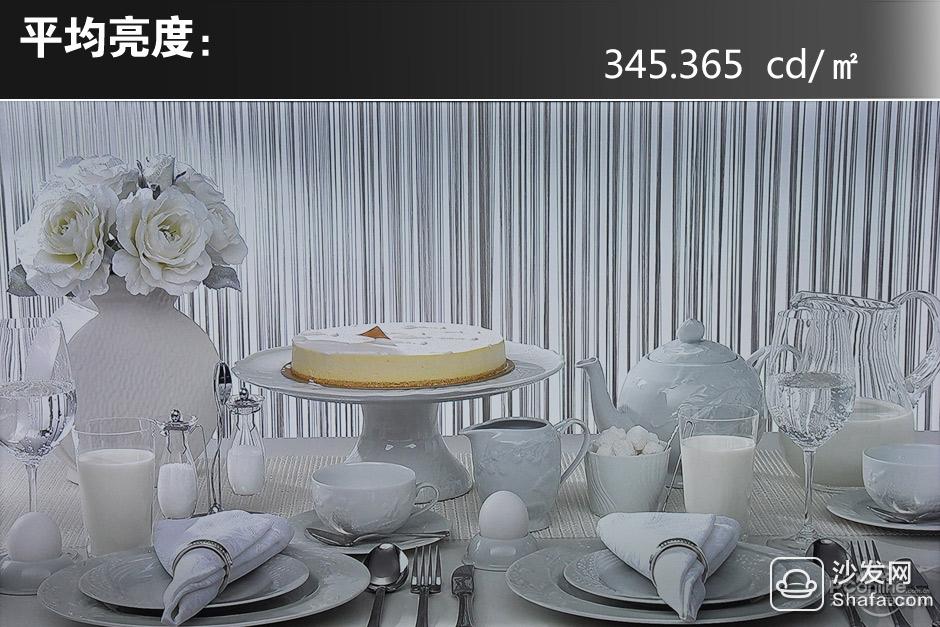
The nominal brightness value is regarded by the author as a historical problem. The early light transmittance of the LCD panel filters and other materials is insufficient, so the picture appears dull. At that time, various manufacturers are bragging about the brightness level of their products. Over time, current LCD TVs are not used outdoors, if the brightness of the home is absolutely sufficient. So we pay more attention to the problem of average brightness and brightness uniformity.
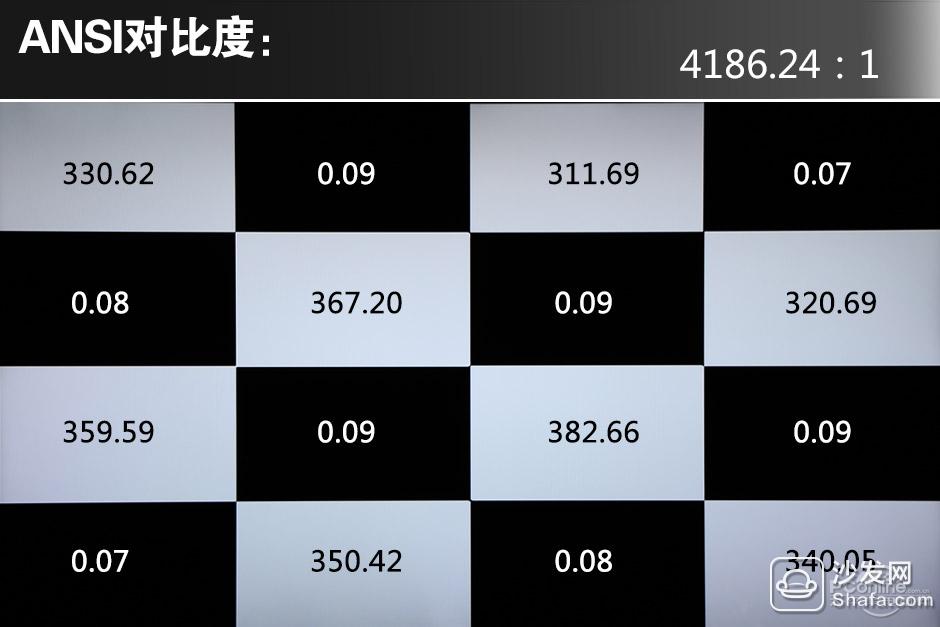
Therefore, we have introduced the concept of ANSI contrast, which can well reflect the advantages and disadvantages of TV light control performance.
What is ANSI contrast?
American National Standards Institute (ANSI - American National Standards Institute) A voluntary organization of companies, governments, and other members. They negotiate standards-related activities, review US national standards, and work hard to improve the U.S. position in the International Organization for Standardization. In addition, ANSI has developed international standards and U.S. standards related to communications and networking. ANSI is a member of IEC and ISO .
The ANSI contrast ratio is the contrast ratio measured using the ANSI standard (ANSI - American National Standards Institute) test method. The ANSI contrast test method uses 16 black and white color patches, and the average value of the 8 white areas is the average value of the 8 black areas. The ratio is ANSI contrast. Compared to the dynamic contrast converted from the brightest point and the darkest point on the screen, this means that the reference value close to the average contrast is more realistic because the user will not be aware of the brightness and darkness of the screen. The difference between the values ​​is larger and the quality of the picture is defined, but the picture of the light and dark difference perception of the more dynamic picture is more or less detailed.
From the test you can see the product's brightness uniformity and effective contrast. The black block uniformity of this TV is very good. The fluctuation range is 0.02cd/m2, which is a very good result. The brightness difference of bright blocks is more obvious. You can see that the difference between the brightest and darkest blocks is very obvious.

After the concept of extremely bright and extremely dark, how can we further examine the optical control performance of the television? We have introduced 16 grayscale tests. According to the step-like gray changes, we can intuitively get the TV's optical control accuracy level. So what do we know about the grayscale performance of a TV? What can a good product bring us? Don't worry, look at the picture below.
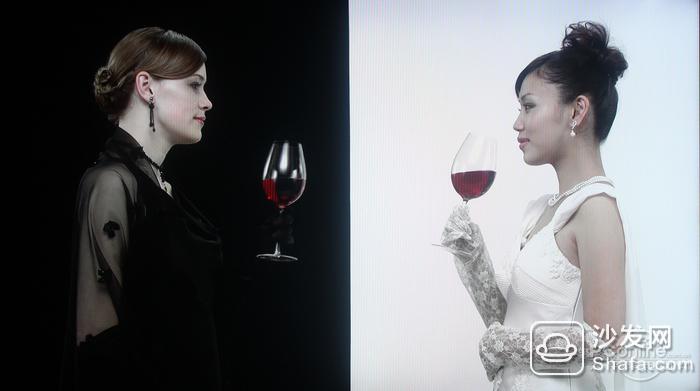
This can be said to be a negative teaching material. The two ladies wear black and white evening dresses and stand in front of the black and white background plates respectively. If the grayscale resolution capability is strong enough, the ladies' evening dress edges will be able to present themselves well, and vice versa. Together, I can't see any details.
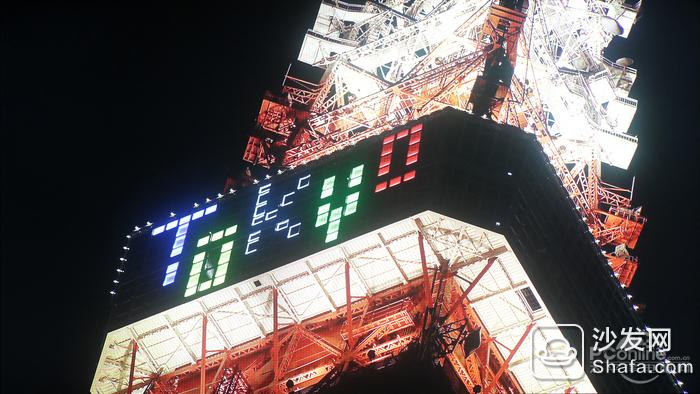

The above two diagrams are also screen shots that we commonly use to examine the backlight control performance of TVs. The brightness of the fonts on the first Tokyo Tower lighting block and the extinguished lamp block is very large. At this time, the edge of the lamp is clear. The degree has become an ideal material for examining the optical control performance of televisions. The principle of black charcoal is also similar. The richer charcoal details in the lower left corner indicate better light control performance.
In addition to light and shade and color, what else is affecting image quality? We believe that even if the static picture or the small dynamic picture presentation is perfect, if watching a football is a blurry action movie, such a television can hardly be said to be a good-quality television. So how do you watch TV's dynamic performance?
Dynamic performance test
The video of the small train is a standard test video we use to test the performance of the TV's dynamic screen. Unlike the usual dynamic objects, this video requires a relatively high level of video. It is also necessary to clearly see the opposite scene through the train window.

Screen shot E

Screen shot F
Comparing the above two different TV sets, the tree-shade definition and the screen shot image of the screen shot E have different amplification effects, but the edge profile is even clearer, so that the dynamic performance is better than that of the upper panel. The conclusion of the figure is very easy.
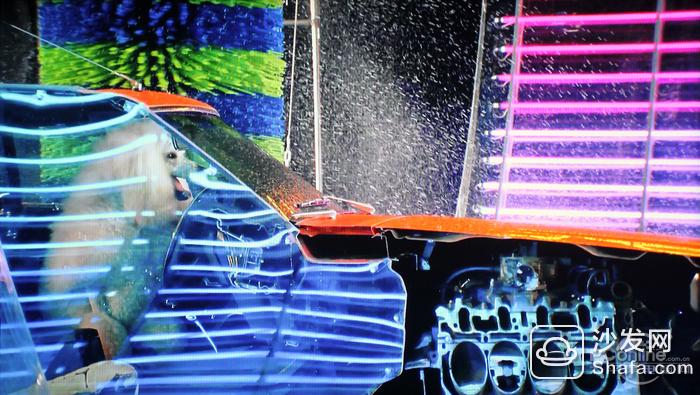

In addition, some highly dynamic videos are also the standard video for us to inspect the dynamic performance of televisions. In dogs' driving pictures, the water droplets generated by the car wash are flying in a horizontal direction, and the arrows in the figure below are very fast. It can be concluded that the TV's dynamic performance is good or bad by comparing the fixed number of frames with high-speed continuous shooting.

Screen shot G

Screen shot H
In addition to dynamic movies, sports also have high requirements on the dynamic performance of televisions. In the cheering team on the map above, attention is paid to the display effect of the girl's rotating ball. The more details, the less the kneading and the better the dynamic performance.
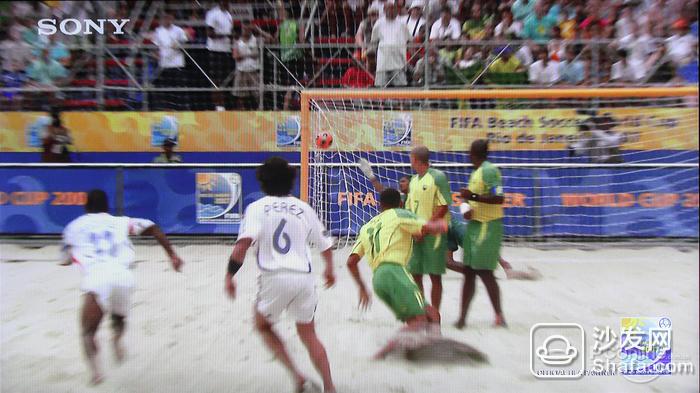
Screen shot I

Screen shot J
When the ball is shot, the speed of the ball is not low. It is very important to be able to see the ball, but I don't know if everyone has used liquid crystal to watch football. I don't know if it's actually the most difficult to show. It's the lawn. If the color difference is small, the detail will appear. very difficult. The author used an old LCD that was five years old and watching the ball was a mess. And this screen shot, we can look at the details of the beach by analogy, the details are rich and clear to win.
Summary: Actually, our investigation of the quality of television is very diverse, because in actual combat, we have found that TVs with a single parameter may not necessarily give a good quality picture. So we first introduced a color gamut test. Then subdividing color, light control and dynamic performance, in addition to testing according to the NTSC standard, also referred to the ANSI contrast standard test, combined with Qtec test disk for flow testing, the final evaluation of picture quality.
The visible color gamut is indeed an important reference point for image quality, but what is certain is that this is not the whole picture quality. The peak season for the new year's purchase has already begun. Assuming that there are black shopping guides, the color gamut will be given separately in the store. You may have to stay. Dim sum.
China Fiber Optic Temperature Sensor,Fiber Sensing manufacturer, choose the high quality Fiber Optic Pressure Sensor,Fiber Optic Current Sensor, etc. SUENW always puts customer needs first and insists on factory self-management. Look forward to your cooperation!
Fiber Optic Temperature Sensor,Fiber Sensing,Fiber Optic Pressure Sensor,Fiber Optic Current Sensor
Shenzhen ShenWu Sensor Co.Ltd. , https://www.szsuenw.com